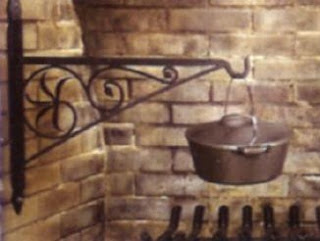"She dignifies and makes holy the tilling of the soil while not glossing over the hardships of life. It is drudgery, but she makes it a blessed drudgery, glorified by the loves of life, brightened by the higher vision - a drudgery which brings its own reward."
~ William E. Connelley, from A Standard History of Kansas and Kansans, 1918
A Hoosier-born author, brought up on a farm, located between Carthage and Charlottesville in Rush County, Indiana, Margaret “Maggie” Hill was the sixth of seven children of tenth generation Quakers. Her pioneer parents arrived in Indiana in 1858 from Randolph County, North Carolina. Raised in a home that stressed reading and education, Maggie, as a child, was considered shy, retiring and somewhat slow – a dreamer.
She certainly bloomed! After attending the Quaker Earlham College for 2 years, Margaret completed four years of coursework in two years to graduate with a degree in education from the State Normal School in Terre Haute. She began her professional career as an educator in Indiana public schools - near her family home, as an elementary “schoolteacher,"starting at the age of sixteen in 1876; in Rensselaer, as a high school principal; and in Goshen, as head of the English department. In 1888, at the age of 28, Margaret accepted a position as head of the English department at Topeka High School in Kansas, which she continued to fill until 1894.
Kansas became Margaret’s true and beloved home, where she married Topeka dentist, Dr. William Arthur McCarter, also Hoosier-born of pioneer parents, in 1890; raised 2 daughters and a son; and in 1901 began her long career as a prolific author. She edited, with biographical and bibliographical notes, several titles in the Crane Classics series, including: Hawthorne's Great Stone Face; and Miraculous Pitcher; Holmes' Grandmother's Story of Bunker Hill, Longfellow's Song of Hiawatha; Lowell's Vision of Sir Launfal; Shakespeare's King Lear and Merchant of Venice, and Whittier's Snowbound. She contributed poetry and short stories to various newspapers and magazines and authored many famous, well-loved books: A Bunch of Things Tied Up with Strings, 1901; Cuddy, and Other Stories, 1902; The Cottonwood's Story, 1903; Overflowing Waters, 1903; Christmas Eve in the Day Coach, 1905; Cuddy's Baby: A Story of the Kansas Folks; 1907; In Old Quivira, 1908; The Price of the Prairie: A Story of Kansas, 1910; The Peace of the Solomon Valley, 1911; A Wall of Men, 1912; A Master's Degree, 1913; Winning of the Wilderness, 1914; The Corner Stone, 1915; Vanguards of The Plains, A Romance of the Santa Fe Trail, 1917; Paying Mother: The Tribute Beautiful, 1920; The Reclaimers, 1918; Homeland: A Present Day Love Story, 1922; Widening Waters, 1924; and The Candle in the Window, 1925. Margaret Hill McCarter is considered to be Kansas’ first popular female author for her many novels set against the Kansas prairie and for memorializing the early days of the state; and she remains, today, Kansas’ bestselling female author.
“No one has succeeded so well in translating the atmosphere of Kansas prairies and the experiences and ideals of Kansas men and women as has Margaret Hill McCarter, author of Middle West fiction. It has been her task to search out and clothe with fitting words the simplicity and the real grandeur of the people who made Kansas and are still its breath and life.”
~ William E. Connelley
Margaret was also very active in the founding and work of several women’s and literary clubs, historical societies, and civic organizations in both Indiana and Kansas and was well-known as an orator at civic and women’s groups and on the Chautauqua circuit. Her lecture on Abraham Lincoln was said to be one of the “most thrilling and comprehensive that has ever been delivered on this subject.”
"From the shy child on the Indiana farm to the busy woman who has earned for herself both gold and fame is a far cry - and yet not so far. She began life as a dreamer…'Is your castle in the air?' asks Thoreau, 'Good, that is where it should be. Now put a foundation under it.' And the foundation which Margaret Hill McCarter has put under her air castles is builded on the solid rock.”
~ William E. Connelley
To view more of Margaret’s book covers and other memorabilia, click here.

























































%20Virgin%20with%20Child%20at%20Sunset.jpg)













































.jpg)









